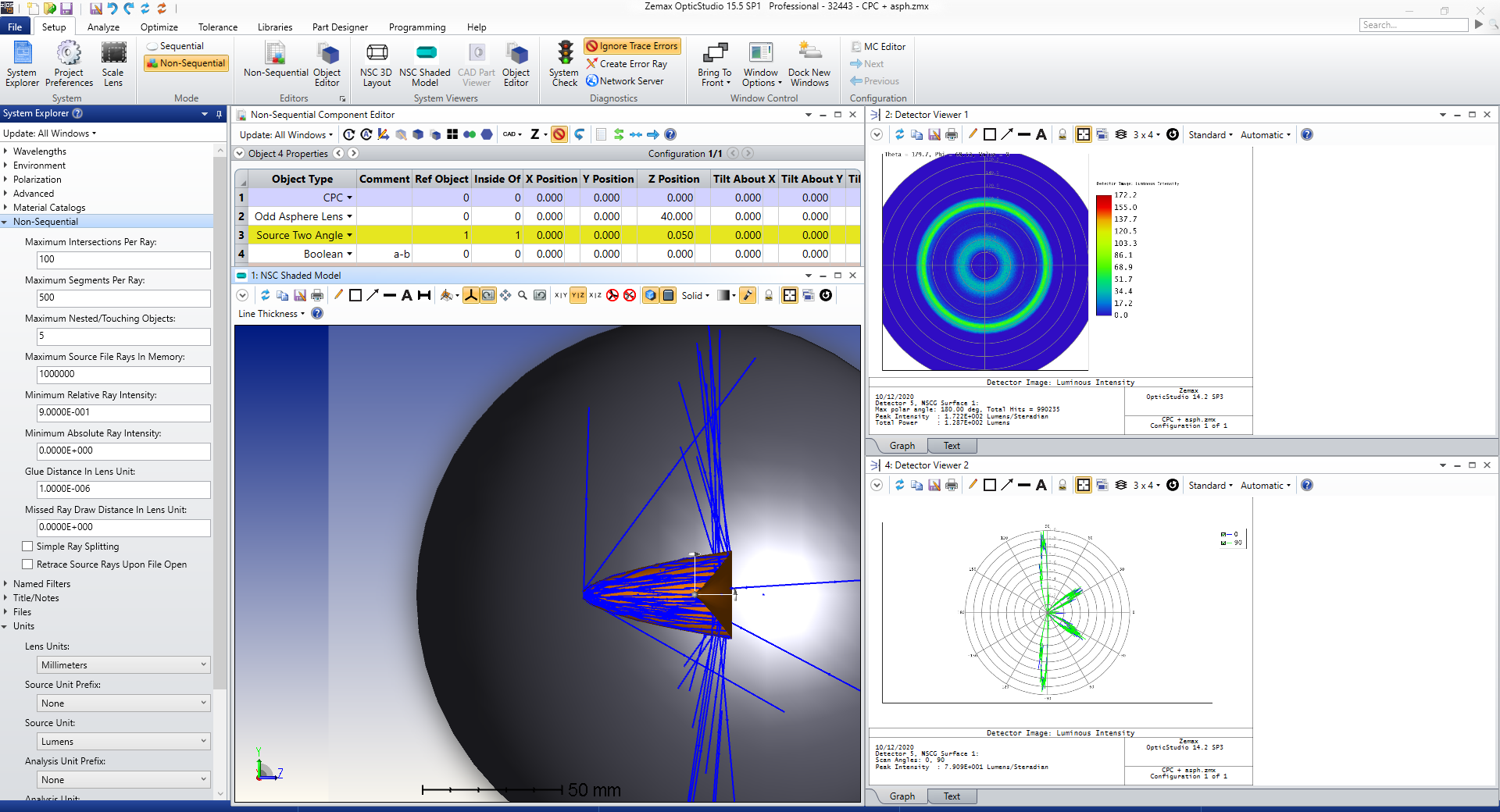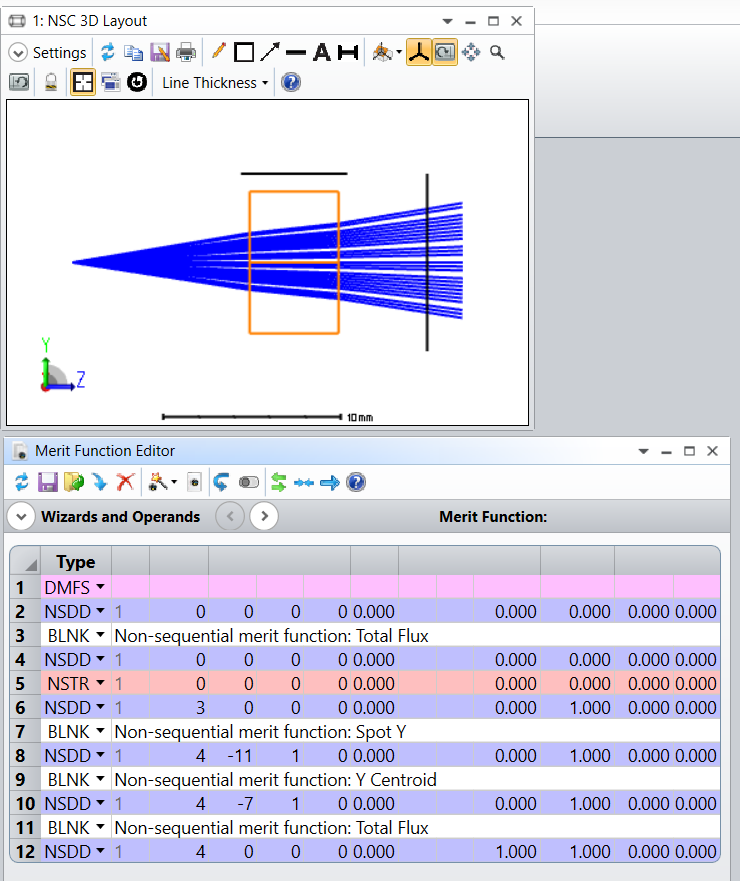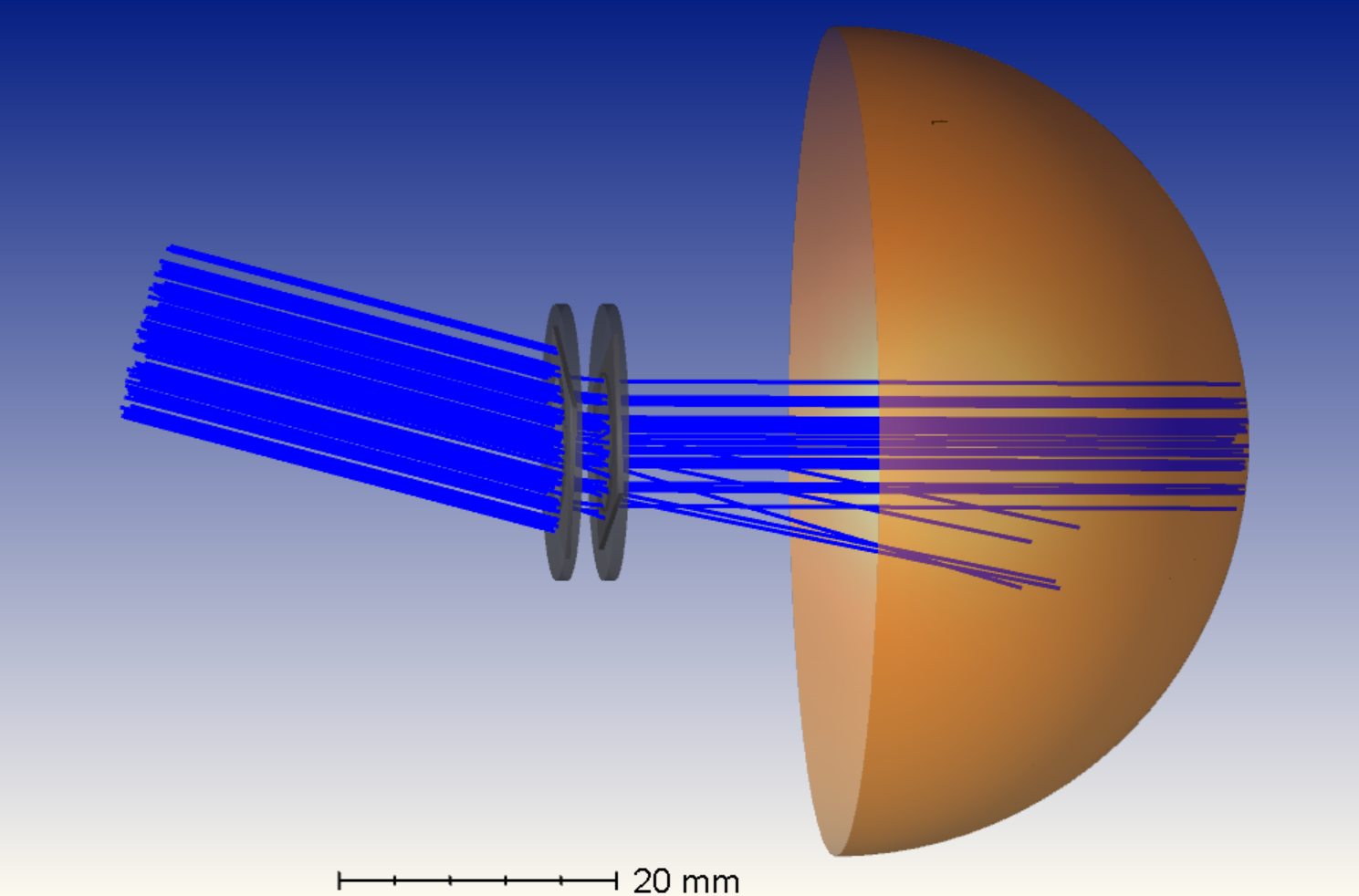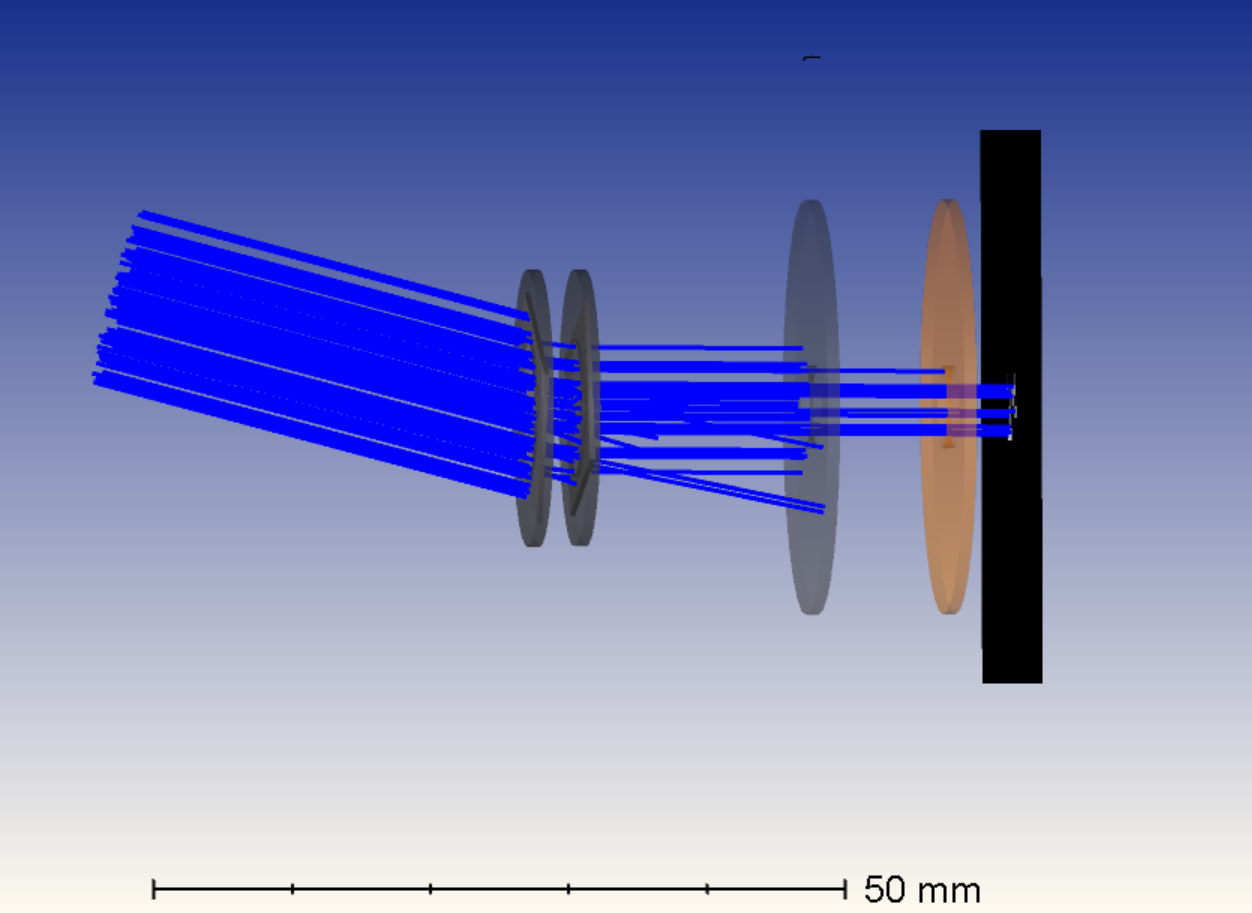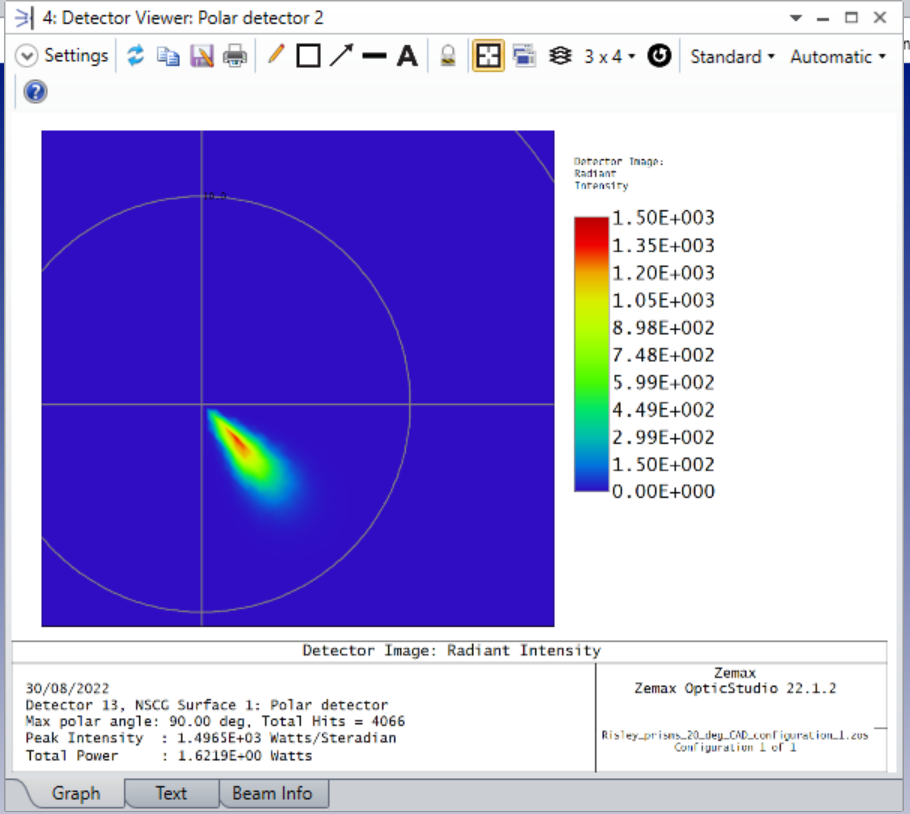Hi,
I'm trying to design an optic that will concentrate the light from an LED into a thin disk at 90 degrees to the LED axis . My initial 'guess' comes close (see image) and consists of a boolean combination of native objects (a CPC and an odd aspheric). Now I'd like to optimise it, but am having difficulty writing the necessary merit function (I'm not very experienced with non-sequential Zemax).
I am using a Polar Detector and so assume that NSDP is the operand I need to use but can't see how to use it to return the intensity at 90 degree polar angle. Or should I be using a different detector?
Any help/suggestions much appreciated !
John
